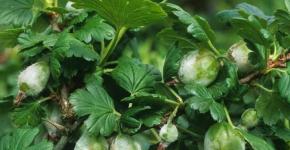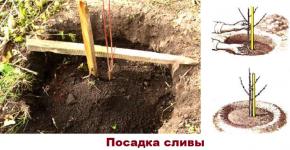Ornamental elm, cultivation, description and types
Elm or Ilm (Ulmus) in nature is a powerful tall tree or shrub. The genus of culture includes about 20 deciduous, rarely evergreen species that grow in temperate climatic zones of North America, Europe and Asia.
In the garden landscape, only decorative elms are in demand, which are distinguished by their unpretentiousness and long life in care.
Elm tree, description
Serrated leaves from 2 to 16 cm, depending on the species. They have a characteristic asymmetrical base and taper towards the top. The leaves are located on the shoots alternately, forming a dense, dense crown.
Red-purple flowers, collected in inflorescences of several pieces, appear along the shoots in March or early April. After pollination, small winged fruits are tied in place of flowers, which are carried by the wind.
The seeds of the elm that have fallen into the ground germinate in just a few days, and the tree begins to bear fruit at the age of 6-7 years.
Garden varieties and types of elm with a photo
Mountain elm or rough "Camperdouni" (Ulmus glabra Camperdownii). It is a picturesque low tree with a characteristic weeping crown in the form of an umbrella made of tough shoots.
The height of "Camperdownii" is usually 2 - 2.5 m. In a few years, the crown width can reach 6 - 18 m. The leaves are large, hard, numerous. In autumn they acquire a golden yellow color.
Weeping Elm "Pendula" with a compact crown. Another undersized variety of mountain elm with shoots forming a green tent.
Trees prefer sunny locations and fertile soil.

The same kind of variety from Dutch producers - "Shiva"(formerly "Monstrosa"). A rare dwarf elm, one of its smallest forms. Grows as a compact, round bush. In adulthood, its size is only 40 cm in height and 40 cm in width.
The leaves are large, about 4 cm, which is special for this small plant. The unique appearance and shape of the variety fit perfectly into the composition of low-growing shrubs, conifers and cereals.
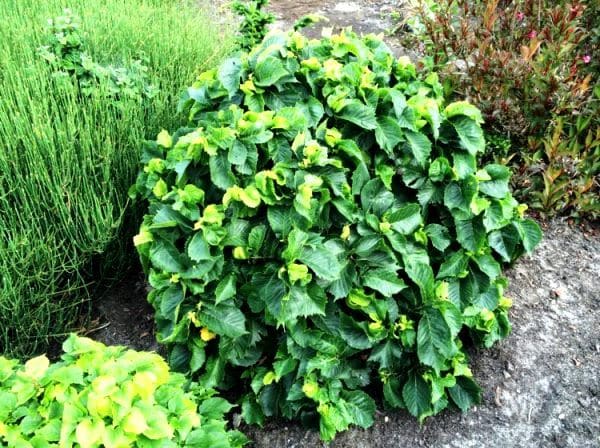
Cork elm or elm (U. Minor) Synonyms: small, field or hornbeam elm. In nature, it is a powerful long-lived tree that grows throughout Europe. Three varieties have become widespread in horticulture.
"Argenteovariegata"... The decorativeness of the elm lies in its variegated foliage with white and cream spots. It grows slowly. The height of an adult tree reaches 10 meters, and the width of the crown is 5 meters.
Typical requirements for this species are fertile, moderately damp soil, a sunny location that enhances the vibrancy of the foliage.
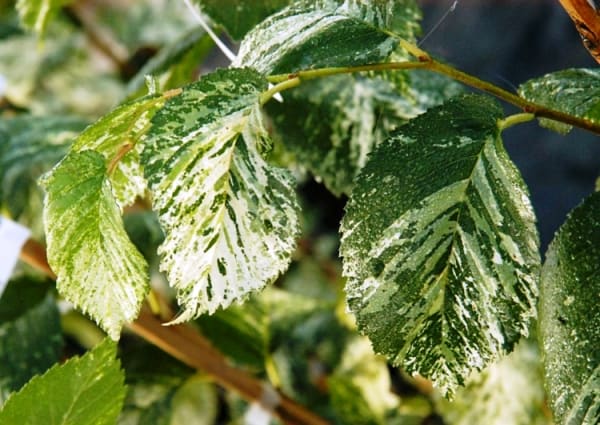
In the garden, Argenteovariegata is in perfect harmony with other variegated plants, although these original varieties are usually planted separately to create a strong accent in the garden design.
"Webbiana"- decorative elm with a unique type of foliage. Throughout the season, the leaves of this tree are slightly curled up. It seems that the tree is drying up or sick.
Meanwhile, this is a feature of the varietal form. Produces a broad crown of several large, strong branches. The maximum height is about 4-5 meters. It grows well in moist and fertile soil, but due to the structure of the foliage, which reduces evaporation of water, the variety is resistant to prolonged drought.
The most popular and incredibly beautiful variety of this type is Jacqueline Hillier... Compact, low and slow-growing tree. Its decoration is small, densely arranged, slightly twisted, dark green leaves about 2-3 cm long.
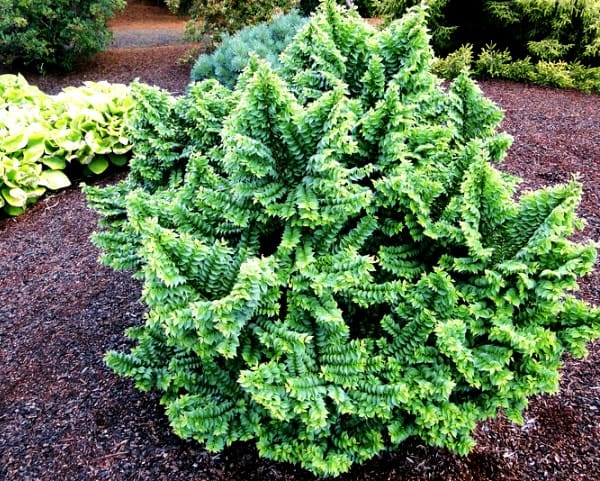
Young leaves of a pink hue. The varietal form is grown both on a trunk and in the form of a bush. It can grow in any light. The variety is resistant to diseases and low temperatures, it can grow on fertile and poor soils. After 10 years, its height reaches 1.8 m.
White or American Elm (Ulmus americana)... This tree is incredibly hardy, unlike many ornamental varieties and hybrids, it can withstand temperatures down to minus 42 ̊С! Unfortunately, this species is susceptible to Dutch disease.
Variety "Beebes-Weeping"
The tree has a high, slightly delicate crown. An interesting fact is that the American elm does not show sensitivity to the length of the photoperiod - it will continue to grow all the time in the fall, despite the shortening days, until its growth is stopped by frost.
Squat Elm (U. Pumila) or small-leaved (Ulmus parvifolia) native to East Asia. A small evergreen shrub or tree that is ideal for creating a bonsai style. The leaves are small, in some varieties they are small, shiny.
Highly decorative variety "Geisha"... In spring, the leaves are white-lime and white-cream, but after a short time they turn dark green with creamy teeth at the edges. A tree with a picturesque crown, some of the branches grow vertically, and some hang slightly to the ground, often sold on a trunk.
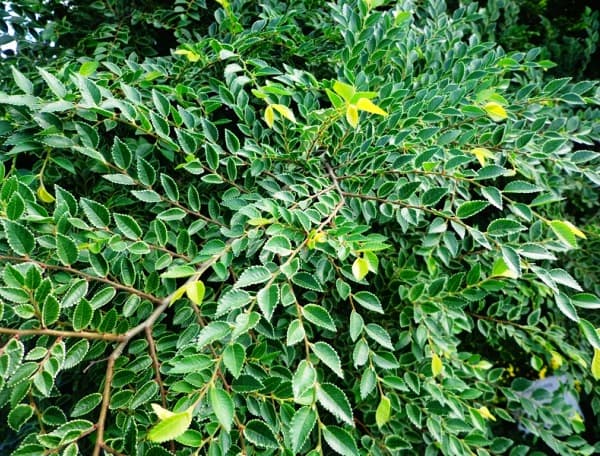
The variety is completely frost-hardy, although it is not recommended to plant it in places exposed to strong winds. Requires fertile, moist soils and plenty of sun, which results in bright foliage colors. The maximum height is about 3 meters. Looks great as a tapeworm near the house or on the lawn.
Hokkaido is a dwarf Japanese variety. In eastern countries, it has gained great popularity as an excellent material for the formation of the elm bonsai. Grows in the form of a bush with a dense, branched, oval crown. Height is about 50-70 cm.
Shoots are thin, bizarrely curved, densely leafy. Thanks to the growth shape of the shoots, this tree is decorative not only during the season, but also in winter! It has a very high resistance to various types of soil, although it grows best on fertile and moderately moist soils in full sun.
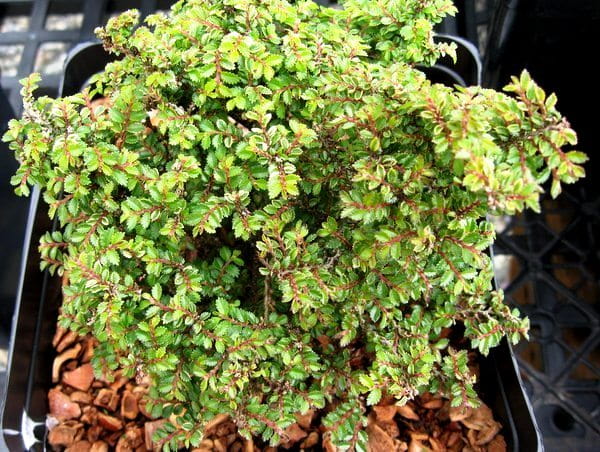
The variety is completely frost-hardy, but it is better to grow it in places protected from the cold winter wind. In the garden looks great in rockeries, on, along the paths. Such a planting allows you to appreciate all the advantages of the varietal form.
A very famous hybrid in horticulture - Dutch elm (Ulmus x hollandica) variety "Wredei"... A short tree with a narrow conical or cylindrical crown.
Densely leafy shoots. Leaves are wide, tight to the shoot. In spring they are light yellow, in summer they acquire a golden-green color. The shape of the leaf is slightly curled. The tree grows slowly and after 10 years it reaches 4 m in height.
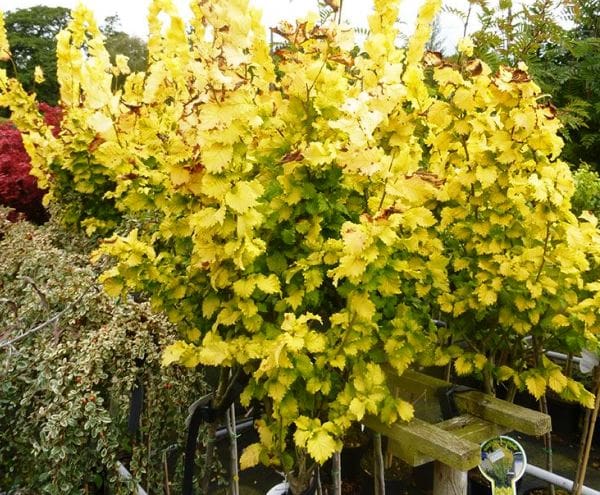
The plant has low soil requirements and is frost-resistant. The recommended variety is great for color compositions, it looks especially beautiful next to varieties of trees and bushes with green and purple foliage (barberry, crimson).
The variety can grow in the sun and in partial shade, it is drought-resistant, but when planted in the sun requires regular watering.
General rules for the care of elm
Species belonging to the genus Ulmus are usually more demanding when it comes to substrate and moisture levels. Their natural habitats are predominantly wet and fertile areas near rivers. Nevertheless, the soil must be permeable to water, since the elm does not tolerate stagnant water.
Young seedlings of elms after planting require regular watering, the soil should not dry out. Mature trees are watered in the absence of rain and after a snowless winter.
Poor soils are enriched with compost or humus. The soil around the stands with a thick layer of compost, bark or pebbles to avoid moisture evaporation.
Elm care includes sanitary pruning, which is carried out in early spring. Since the shoots grow very slowly, severe shortening is not recommended.
Elm pests and diseases
Ilms were once one of the most popular trees in the European landscape. Unfortunately, in the twentieth century, many of them were struck by the Dutch elm disease (DED).
The first symptoms of the disease are observed already at the turn of May and June, when at high temperatures the leaves begin to curl, fall off, and the stems dry out. This disease is quite aggressive, therefore, prophylactic or therapeutic (at the onset of the disease) treatment with Topsin M 500 SC is necessary immediately after the temperature rises above 15 ° C.
The treatment is repeated after 10-14 days, trying to spray the preparation on all parts of the tree. The next treatment is repeated in the summer, and the last one is carried out in the fall. The Dutch hybrid is most susceptible to the disease, other decorative elms are more resistant.
Plantings can also be affected by viral and fungal diseases. For this reason, observation from the beginning of the growing season and preventive treatment are required.
Of the pests, the most famous is the elm leaf beetle, aphid. In the fall (October, November), preventive spraying can be carried out. For this purpose, the Promanal or Treol paraffin oil based secticides are used. The leaves are burned in autumn to prevent the spread of disease and pests.

